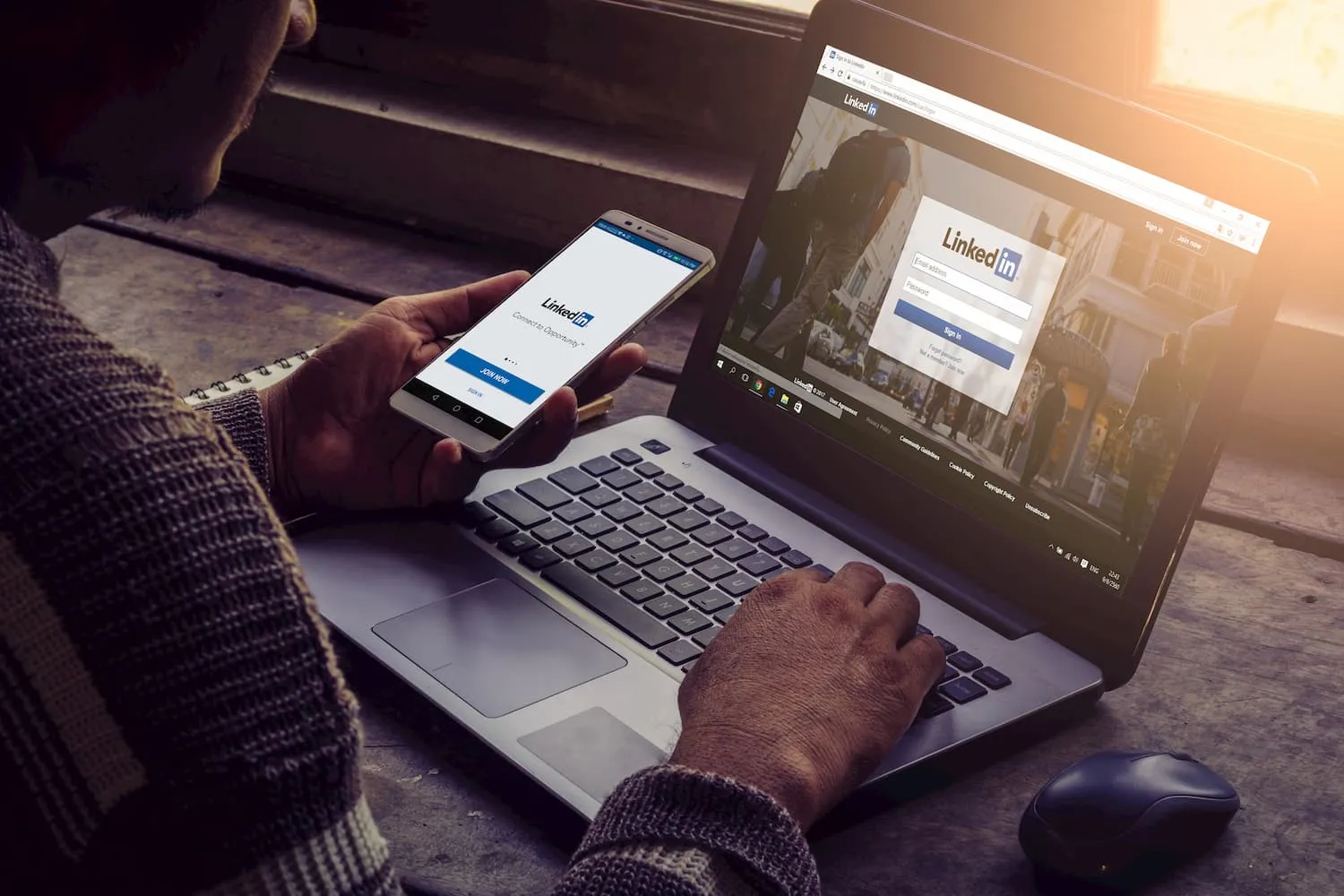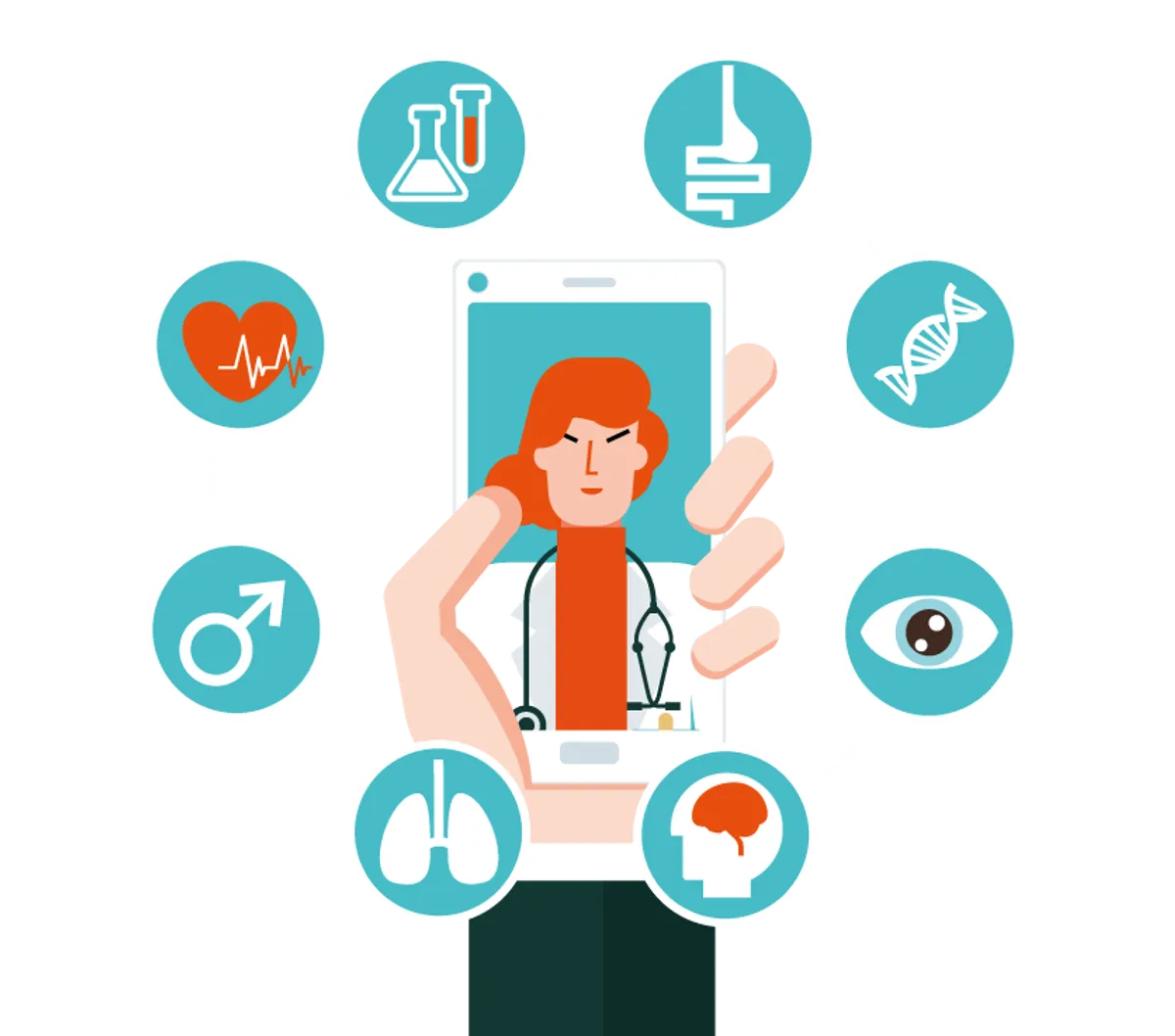
Obviously COVID-19 has brought unprecedented changes during 2020, but even before the pandemic took hold, how we approached digital marketing was evolving faster than ever.
Buying habits amongst healthcare professionals are changing, with people increasingly starting their purchasing journeys online. As marketing professionals, we know the importance social media plays in part of this online journey. From Facebook, Instagram, Twitter and LinkedIn, there are many different social platforms to choose from when trying to reach your ideal audience, each has an attached advertising tool, and each has its strengths and weaknesses.
If you’re a marketing manager at a pharmaceutical company, a healthcare organisation, or perhaps a medical device manufacturer, streamlining your approach to digital marketing is critical. But don’t panic just yet. Today we share some expert advice on how to use LinkedIn to get in front of clinicians to attract leads, increase conversions and drive sales.

How is LinkedIn used Amongst Healthcare Professionals?
You may be surprised, but nearly half of doctors are active on social media for professional purposes
Specifically, the LinkedIn platform is popular with doctors, nurses, surgeons and dentists, who use it to network with others and to market themselves and their businesses. More than 6.2M clinicians and healthcare professionals are on the platform.
With that figure in mind, it makes sense to explore options for advertising on the LinkedIn platform. In our experience at Medico Digital, one of the main reasons people shy away from advertising on LinkedIn is cost. Compared to Facebook, Instagram and Twitter, the average cost per click (CPC) or cost per impression (CPM) is often considerably higher. For example, CPCs on LinkedIn are typically ~£5.20. At a glance, this seems high compared with Facebook, where CPCs are around ~£1.00 in the healthcare sector.
Tight budgets, poor audience targeting and a lack of testing can then lead to disappointing results. Below, we share with you best practices for getting started with LinkedIn advertising, using advanced targeting options to build trust, nurture relationships and reach your ideal audience.

Sophisticated Targeting Features
If you’ve built campaigns using the LinkedIn Campaign Manager then you’ll know that you have several options to choose from to determine your perfect audience - job titles, job functions, industry, skills, seniority, group membership, education, job experience, interests.
When a clinician creates a profile on LinkedIn, they provide the platform with a range of basic data, from the company name, job title, industry, location and group membership, to education and field of study. From this data, LinkedIn determines additional targeting options such as job function, years of experience and seniority level. There are also options to target specific personas - influencers in the sector, key people, thought leaders and people considered high value.
It’s worth exploring what the targeting options will mean for your campaign. For example, if you consider “medical” as the job function, this targeting option will include occupations such as doctors, nurses, surgeons, dentists, physiotherapists and even vets.
Data-Driven Targeting
One huge competitive advantage LinkedIn has over other social platforms is the ability to target ads based on your data. By using your website or content management system, the data held is used to create matched audiences and lookalike lists. When using website data, you can build a target audience based on the pages they’ve visited on your website. For example, if you’re a pharmaceutical company with a new product due to launch onto the market, you could retarget visitors to a microsite you have built, full of clinical information on the disease your product will treat. You can then serve visitors with an advert which aims to convert that visitor into a lead - perhaps by offering relevant content or research reports. To gather this information, you’ll need to make sure you add the LinkedIn Insight Tag to your website
LinkedIn advertising also allows you to upload your contact lists or connect to your content management system to tap into company and email data. Once you’ve created a matched audience, you can also create a lookalike group. This group of people will have similar characteristics to the data you uploaded.
If you’re looking to target specific accounts with account based marketing (ABM), then LinkedIn is a great platform for this, offering over 12 million company pages! Upload account lists to cross reference your data with company data LinkedIn holds. This tactic can be incredibly useful for targeting decision makers at key accounts.
The recent integration of Bing Ads with LinkedIn also gives you wider targeting options for getting your ads seen by the right audiences. Search campaigns can be a head ache if you have a particularly niche audience (for example a certain seniority at NHS Trusts), but the ability to layer LinkedIn targeting onto your Bing search ads (along with the propensity for Trusts and clinics to restrict browser access, making use of Bing more likely) has been a game-changer for getting in front of hard to find audiences.

- Consider Different Marketing Solutions
- Determine a Budget and Test
- Educate Your Audience
- Review and Pivot
- Consider Different Marketing Solutions
There are numerous LinkedIn marketing solutions and deciding which ones to use will be determined by your goals and where your audience is on their customer journey. For brand awareness, LinkedIn offers sponsored content, video and carousel ads. For conversions, using lead generation forms, conversational ads and InMail should be considered. Often, companies should take a combined approach. For example, during April, Johnson and Johnson went live on LinkedIn with a combination of video ads, sponsored content and message ads, along with their LinkedIn Live “The Road to a Vaccine” series. Within just a minute of streaming live, they’d already reached a thousand viewers. In total, they’ve had over a million views of the series on LinkedIn.
Determine a Budget and Test
As with any form of cost per click or cost per impression advertising, you can define and set your bids and budgets. This could be a daily budget you’re willing to spend or an overall campaign budget which will drip-feed over a set time to maximise results.
LinkedIn’s Campaign manager will suggest an optimal range of bids based on current bid trends for your target audience. To be able to test and learn what works, LinkedIn suggests testing with a minimum of £70 per day, or a £2000 minimum spend over a month. Of course, these budgets are entirely up to you but it’s worth having adequate budgets for initial testing.
Even with a small budget, you should test your ads to see which perform the best. Change things like your Call to Action, creative or a line of copy. Even small changes can have a significant impact.
Educate Your Audience
Depending on your audience and objectives, make sure you use the right content in your advertisements. Aim to help rather than sell. If you consider healthcare professionals, they are highly educated individuals who are interested in research, news and education to develop their knowledge in their field of choice. Make sure your content reflects what they want. Think about offering research, whitepapers, ebooks and content which demonstrates that you speak the same language as your audience.
Consider the role trust plays when marketing to healthcare professionals and clinicians. Is your content credible? Does it demonstrate your expertise and competence in your field? For example, executive voices are vital when it comes to establishing trust.
According to LinkedIn, and not surprisingly, one of the fastest-growing topics of conversation at the moment is around telemedicine. Consider the type of content which will resonate with your audience. How can you help, educate and inspire them with timely ads that coincide with real-life conversations? Find out what clinicians, practitioners, healthcare providers and manufacturers care about and use this information to drive your ad creatives and copy.
LinkedIn recommends using three to four creatives per ad campaign. Think about your creatives and how they tie in with your offering. Make sure you use a firm call to action that clearly states what you want your audience to do.
Review and Pivot
Document your ad campaigns and review them often. Don’t just set them up, let them run and then take a quick look at the results. Monitor ads and optimise the ones which perhaps aren’t performing as well as you expected. Why aren’t they driving the results you’d hope for? Is your audience pool correct for the campaign you’re running? Perhaps the creatives don’t resonate with your audience or maybe the copy needs tweaking.
It’s a good idea to review some LinkedIn benchmarks for your industry to see how your ads perform relative to your competitors.

Have you taken advantage of LinkedIn advertising? With a continued emphasis on increasing digital marketing activity in a post Covid world, now is a good time to take a look at what you can do to up your game on LinkedIn. Contact Medico Digital today.
Sign up to our newsletter to follow our blog series the online patient journey. In our next post, we discuss the discovery phase of the journey and provide advice on how great copy will help position you as an authority in the online space.
[hubspot type=form portal=7957704 id=c61150fa-99d9-4f4d-bcd9-123d5ab957e9]
